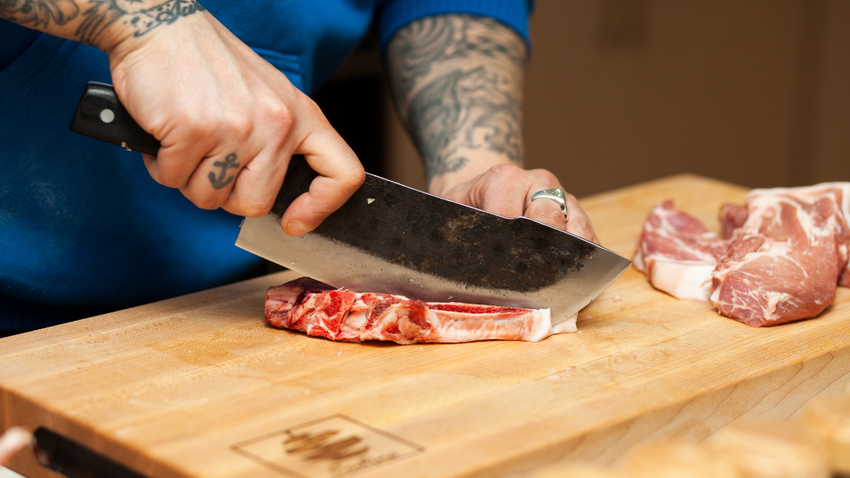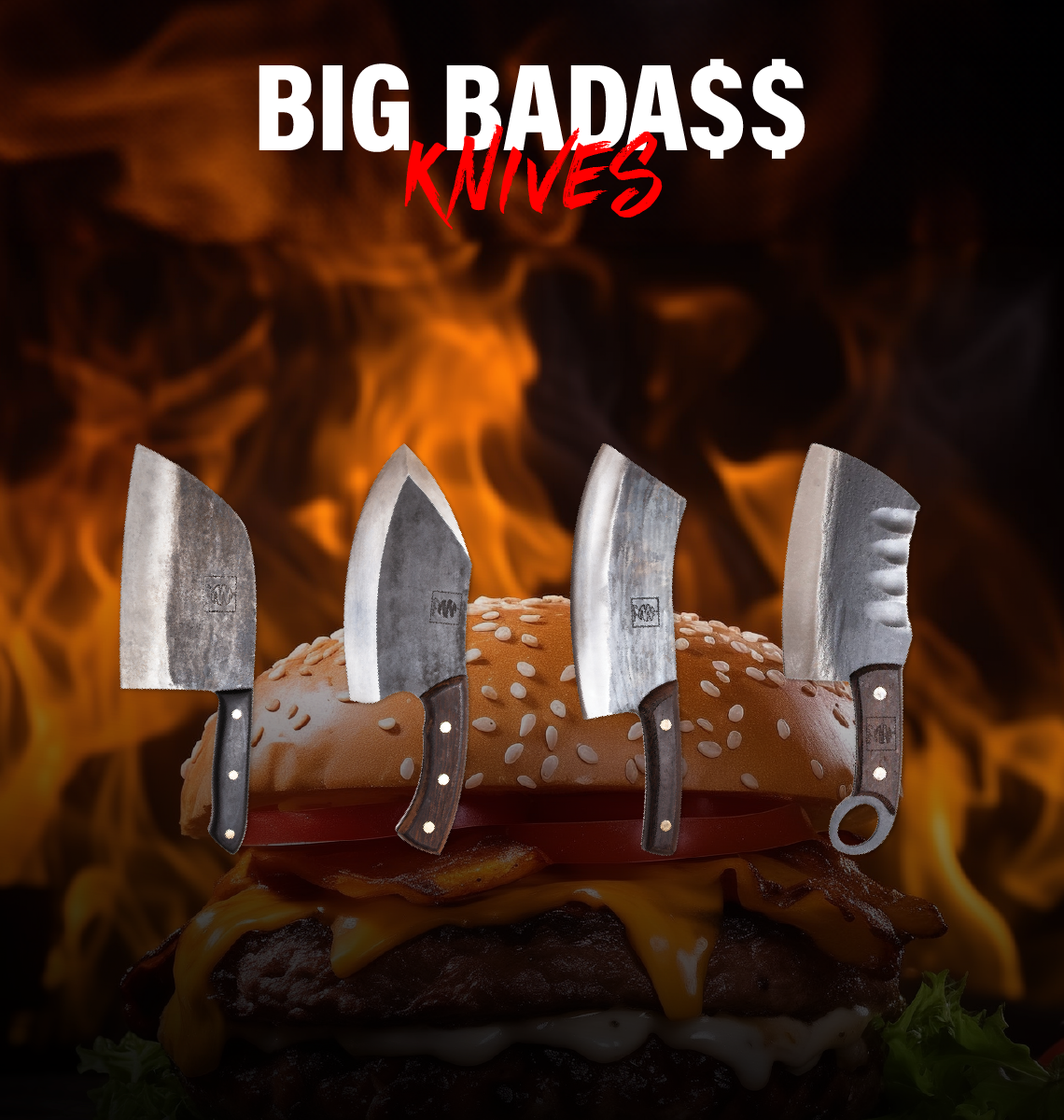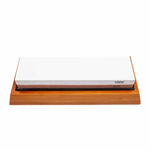How to chop food like a professional Chef

How do chefs chop food so fast, so smooth, and so easy? Are these questions that you want to know the answer to? Well, we’ve got a whole guide for you and so much more. Today, we are learning the art of cutting food like a professional chef.
It is hard to not envy the knife skills of professional chefs and lucky for us, we can all become as good at chopping food as they are. It is actually not that hard if you practice enough and find a high-quality chef’s knife.
But before you get into learning the steps, you will need to pay attention to a couple of details for the preparation. Here they are:
Choosing a knife
The first and most important step towards chopping like a pro is choosing a real chef's knife that will provide the quality for the skills that you will learn. You need to find the perfect match for the type of cooking you do in your kitchen.
A good chef’s knife can do almost all the cutting tasks that you put it through. It needs to have a broad blade tapering upward to a point, allowing the knife to rock back and forth for fast mincing. It’s typically about 6 to 12 inches long. A greater length usually translates to a faster and easier cutting process. But it doesn’t mean that you have to purchase super long knives, especially if you don’t have much experience.
Nowadays, Japanese handmade knives are taking over the kitchenware scene and that is thanks to their thin and sharp steel blades. These knives make the cutting way easier and help beginners with their techniques.
You should never use a small paring knife to chop food or a big chef’s knife to peel fruit. Every knife has its own purpose and mixing them will end up harming yourself or your kitchen utensils.
 Choosing a chopping board
Choosing a chopping board
The next step on your journey to becoming a chopping pro is choosing your cutting board if you don’t already have one. But a good cutting board is very important for a better cutting experience.
There are a couple of materials for cutting boards, but the best one is, of course, wood. Cutting boards made out of wood are more durable and comfortable to use. Woodcutting boards have natural antiseptic properties that can help keep them clean. You can also use bamboo cutting boards, which even more durable than any other wood.
But a good tip from us would be to not use one cutting board for everything. Get two and separate them to cut veggies and fruit on one and meat on the other so that the odors won’t mix together.
Before starting to cut you need to make sure that your board is secure in its place because you don’t want it to slip around while you are cutting with a sharp knife. If you have a plastic board, you can put a damp kitchen towel underneath to prevent it from slipping, which it will definitely do.
Keeping your knives sharp
If you want to chop like a professional chef, then you will need to take care of your knives as a professional would do. And by taking care, we mainly mean, sharpening. In fact, most chefs sharpen their knives every day since they use them every day.
Sharpening a kitchen knife might seem a bit intimidating or time-consuming but it is actually not that hard if you have the right tools. No need to take your knives to a professional, you can do it at home easily. Now, we won’t break down every possible way to do it, but you can head on over here and learn how to sharpen steel knives.
Now, that you have got everything you need for the preparation, we can proceed to list the steps and the main techniques of chopping food like a pro:
- Holding the knife: Make sure to hold the knife with your dominant hand. Grip the handle of the knife with your index finger and put your thumb on the blade. Both of them should be on the bolster of the knife, which is the meeting point of the blade and the handle. Lay your index finger across the top of the blade. Gripping the handle from sides gives you more free movement than holding the handle with your entire hand.
- Holding the food: Hold the food steadily with your other hand by forming a claw and put it on the food that you are cutting to prevent it from slipping around the cutting board. Make sure to tuck in the thumb of your hand that holds the food so you won’t cut it in the process. The knuckles on your thumb and fingertips should be closer to the knife blade than the fingertips.
- The tap chop technique: If you were wondering what is that quick chop that chefs use to cut veggies and fruit in thin slices, then this is for you. Start by holding the food with your free hand by extending your fingers towards the end of the food where you'll begin slicing. Then raise the blade straight up and bring it straight back down to make a slice. Continue doing the same as you walk your fingertips back. Remember about tucking your thumb in and curling your fingers.
- The cross chop technique: This is the best technique for beginners because it is quite easy to learn and safe for practice. It might not result in perfectly cut similar slices but it is good for chopping food that will be cooked. Start by holding the knife in your dominant hand and laying the palm of your other hand where it meets the fingers on top of the blade. Keep your fingers open and out while the other hand rocks the blade and chops the food roughly. Make sure to keep the tip of the knife down on the board.
- The rock chop technique: This one is very similar to the cross chop technique but instead you use your other hand to move the ingredient. As you chop, you will be keeping the blade still whilst you push the food forward.
- The Julienne cut technique: This is a very fancy technique that you most definitely saw a chef use. With this technique, you will get very thin and long slices of veggies. You will need to start with cutting the food into a square shape. Then, slice it length-wise at a thickness of 1-2mm (1/16 in), which will result in thin rectangular cuts. Then, take the thin slices and apply the same technique and you will have the famous cut.
- The small dice technique: By using this technique you will end up with cubes At 3mm x 3mm x 3mm, which is perfect for salads. You will need to start by doing everything the same as you did with the Julienne cut and all that will be left to do is bunching them up and chopping the food into equally sized cubes.
Conclusion: Professionals can make chopping look hard but be certain that practice and this guide are all you need to become better at cutting food and to eventually become a pro.










